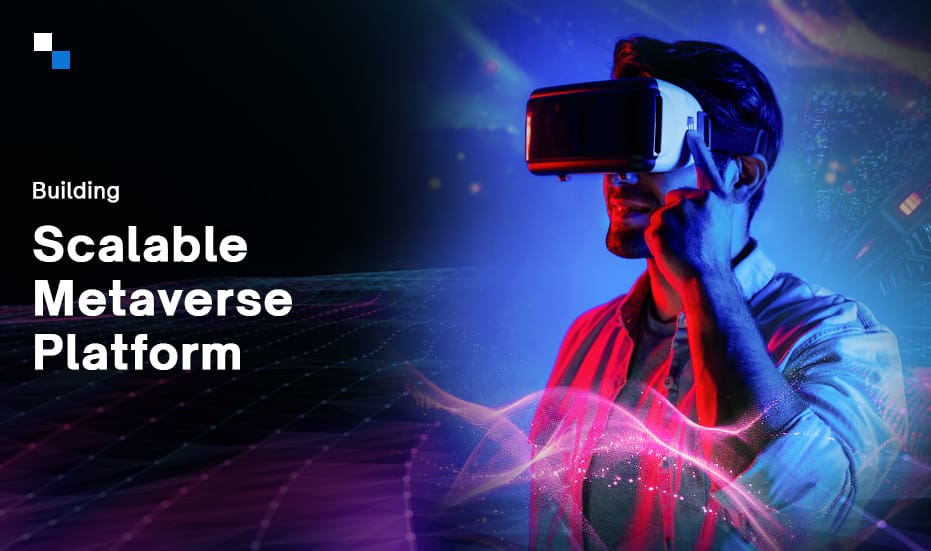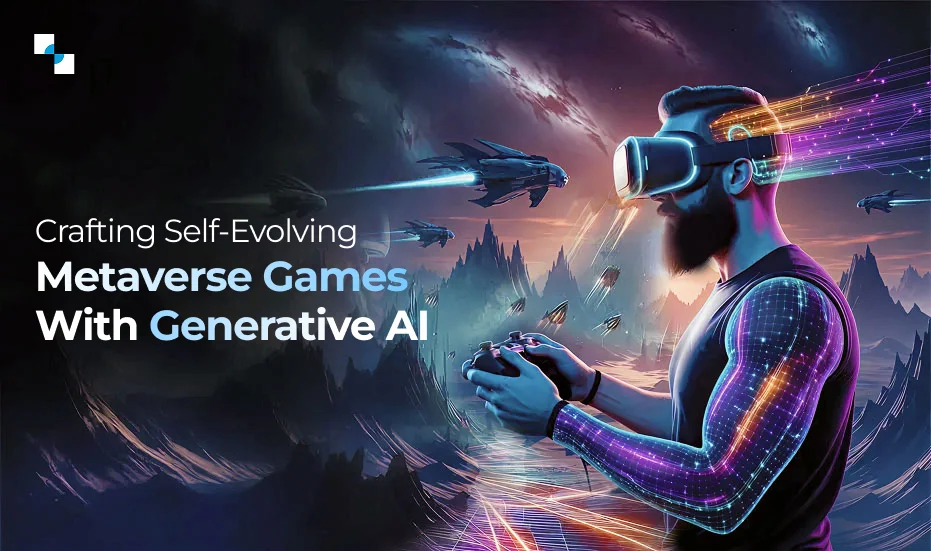The metaverse is no longer a hypothetical notion—it is establishing itself as a foundational layer for everything from virtual interactions and immersive experiences to decentralized economies. As users’ expectations evolve toward persistent environments that allow for real-time and concurrent millions of users, scalability will become another fundamental pillar of success. Whether you’re developing a virtual shopping space, a blockchain-gaming space, or an enterprise collaboration space, elasticity of infrastructure and modularity of architecture are essential. For any metaverse development company, designing platforms that can scale across devices, across geographies, and across users’ actions is not an advantage—it is a requirement.
Why Is Scalability the Backbone of Modern Metaverse Platforms?
Scalability allows a metaverse platform to accommodate increasing users, increasing data, and increasing features without degrading performance or the experience of the user. It has a direct impact on how interactive, secure, and irreversible a virtual world can be. When we talk about metaverse development, scalability is not a one-time implementation but rather an ongoing strategic commitment to resiliency and flexibility.
Key Reasons Why Scalability Is Critical in Metaverse Development:
- Mass User Engagement: Scalable platforms can host thousands to millions of concurrent users without performance drops or system failures.
- Real-Time Interactions: Multiplayer games, live events, and virtual commerce demand latency-free experiences, which only scalable architectures can support.
- Interoperability and Expansion: To support cross-world avatars, NFTs, and tokenized economies, platforms must scale across blockchains and devices.
- Content Creation and Upgrades: A modular, scalable backend allows for frequent updates, content drops, and community-driven customizations.
- Cost-Efficiency and Cloud Optimization: Elastic infrastructure minimizes resource wastage and optimizes cost as demand fluctuates.
A trusted metaverse development agency is focused not only on building immersive experiences but also on building systems that can scale seamlessly as the user’s needs and technology evolve.
What Technologies Power a Scalable Metaverse in 2025?
The scalability of the metaverse is denoted through an exclusive mix of future-growing technologies. All versions of the metaverse, ranging from a focus on 3D environments to living, breathing environments, are a responsibility for everyone in the development ecosystem in 2025. The responsibility of the development ecosystem to allow for evolving, interspersed, and shared environments to function and not break down under heavy traffic probably lies with the tech stack.
A tech stack that recognizes and enables developers to design with a high-performing, decentralized user experience aside from the desktop operating systems. A relevant and forward-thinking metaverse development company will not only evaluate scalability through the bandwidth of the stack’s infrastructure but will evaluate the stacks – blockchain, storage, and rendering systems—scalability towards the whole output as well. All developers know that scalability must exist and work together at every layer of the tech stack (the game engine, backend, smart contracts, and real-time networking) in order to build a truly scalable ecosystem.
Core Technologies Driving Scalable Metaverse Development:
- Game Engines: Unity and Unreal Engine 5 enable rich, high-performance 3D worlds with optimization capabilities for web, mobile, and VR/AR.
- Decentralized Storage: Solutions like IPFS, Filecoin, and Arweave store vast metaverse assets securely and efficiently.
- Blockchain Protocols: Scalable chains like Polygon, Avalanche, and Layer-2 Ethereum enhance transaction throughput and reduce gas fees.
- Smart Contracts: Modular, upgradeable contracts written in Solidity or Rust help manage virtual assets, identity, and gameplay logic.
- Multiplayer Frameworks: Photon, WebRTC, or custom servers ensure real-time interactions with minimal latency.
- Cloud & Edge Computing: Platforms like AWS, Azure, and Cloudflare Workers enable dynamic scaling and reduce server load.
- Interoperability Standards: Protocols such as OpenXR, GLTF, and ERC-4907 allow asset and identity movement across platforms.
For any metaverse development effort to succeed in the long run, these technologies must not only be implemented but also continuously optimized as user demand evolves.

Steps to Develop a Scalable Metaverse Platform
Building a scalable metaverse is not about flashy graphics or immersive design; it’s about developing an online world that can scale efficiently, adapt to changing conditions, and accommodate millions of concurrent users without suffering performance issues.
Every phase of the development process requires consideration of load balancing, modularity, real-time rendering, asset ownership, and multi-platform deployment. A professional metaverse development agency will embrace these requirements from day one—balancing user experience and infrastructure design.
1. Requirement Discovery & Scalability Planning
The foundation phase is critical to shaping the direction of the entire project. Developers, product managers, and business analysts work collaboratively to determine platform goals, user personas, concurrency expectations, and possible scale objectives.
- Identify user volume targets (10K, 100K, or 1M+ concurrent users)
- Define critical features: avatar creation, NFTs, real-time interactions, marketplaces
- Choose regions and geographies for content delivery
- Create a scalability requirement document for infrastructure and content flow
2. Choosing the Right Tech Stack
Your selected technology will greatly impact the scalability of your metaverse. The stack you choose must not only be flexible and supported but also need to integrate with blockchain and real-time protocols.
- Frontend Engines: Unity, Unreal Engine 5 for high-quality visuals
- Blockchain Integration: Ethereum, Polygon, or Avalanche for decentralized asset handling
- Backend: Node.js, Golang, Python (for API handling, game logic, and user auth)
- Decentralized Storage: IPFS, Filecoin for handling large 3D assets and land parcels
- Database: Scalable NoSQL databases like MongoDB or cloud-native options like DynamoDB
3. Modular Architecture Design
In order for your metaverse to be scalable, it will need to be broken down into functional components (or microservices). Each service (user authentication, minting NFTs, chat engine, inventory) should be able to scale individually without impacting each others.
- Service-based architecture using Kubernetes/Docker
- Load balancers and content delivery networks (CDNs)
- Separate smart contract modules for NFTs, tokenomics,and governance
- APIs for extensibility and third-party integration
4. Smart Contract Development & Token Integration
Blockchain is the infrastructure of metaverse economics. In this section of the build, secure and gas-optimized smart contracts will need to be written for user assets, land parcels, in-game items, and utility tokens.
- ERC-721/ERC-1155-based NFTs for digital ownership
- ERC-20 tokens for in-platform economy and staking
- Token gating, play-to-earn logic, and dynamic metadata updates
- Proxy contracts or upgradeable patterns to enable contract evolution
A trusted metaverse development company ensures smart contracts are audited and aligned with regulatory standards from the start.
5. Cloud Infrastructure & Load Testing
Lastly, before the platform is officially launched, it must be deployed in an elastic cloud infrastructure that can address spikes in user activity. Additionally, using load testing in this section assists with validating the platform’s readiness for real-world use.
- Use AWS/GCP with autoscaling groups for compute resources
- Deploy game and rendering logic at edge locations (using Cloudflare Workers, for example)
- Conduct load simulations with 10K+, 50K+, and 100K+ virtual users
- Benchmark CPU/GPU usage, transaction speeds, and user drop-offs
6. UX Optimization & Cross-Platform Compatibility
Scalability isn’t just technical—it’s also about the consistency of experience across devices. From high-end VR headsets to mobile devices, users expect seamless interaction.
- Responsive design across Web, Mobile, and XR platforms
- Dynamic LOD (Level of Detail) rendering for lower-end devices
- SSO and wallet-based login integration (MetaMask, WalletConnect, etc.)
- Intuitive interfaces for marketplaces, land explorers, and user dashboards
7. Security, Compliance & Monitoring
As the platform scales, so do the risks. Cybersecurity, user protection, and monitoring must be proactive—not reactive.
Key Security Layers:
- End-to-end encryption for data transfers and chats
- Role-based access control (RBAC) for platform administration
- Anti-cheat algorithms and bot detection for gaming environments
- Compliance with global regulations (GDPR, CCPA, KYC/AML for tokenized economies)
8. Post-Launch Scalability Tuning
Once live, the platform needs ongoing analysis and adjustments. This stage ensures long-term stability, feature optimization, and continuous innovation.
- Monitor usage trends and optimize rendering/server distribution
- Roll out updates based on analytics and heatmaps
- Expand to additional regions with cloud zone replication
- Engage the community for feedback and bug reports
As the metaverse matures into a dynamic, decentralized layer of the internet, scalability will remain a non-negotiable cornerstone of platform success. From enabling real-time social interactions to powering blockchain-backed digital economies, scalable infrastructure is what transforms virtual experiences from concept to reality. By thoughtfully integrating modular architecture, cloud-native solutions, decentralized technologies, and user-centric design, developers can future-proof their platforms for millions of concurrent users, creators, and contributors. Ultimately, metaverse development is not just about building immersive spaces—it’s about engineering sustainable, evolving digital ecosystems.
Ready to Build a Scalable Metaverse Platform? Partner with Antier
At Antier, we don’t just develop virtual worlds—we engineer metaverse ecosystems that scale with your ambition. As a globally recognized metaverse development company, we combine deep blockchain expertise, cutting-edge tech stacks, and human-centered design to deliver immersive, high-performance metaverse platforms. Whether you’re a startup or an enterprise, our end-to-end development services—from token integration and smart contracts to cloud infrastructure and XR design—ensure your platform is future-ready, interoperable, and built to scale.
Let’s shape the future of the immersive internet—together. Contact our metaverse development experts to get started.







